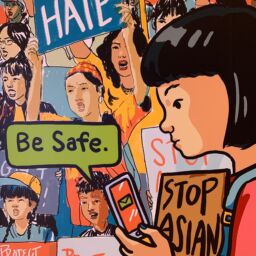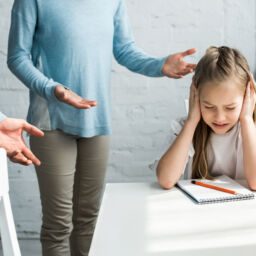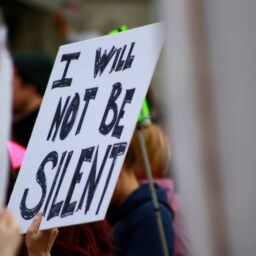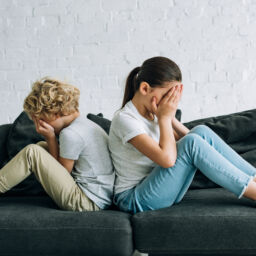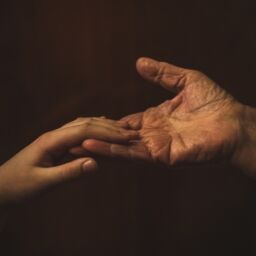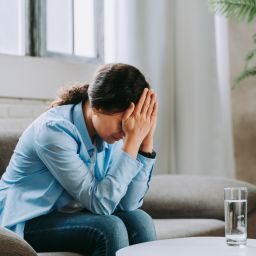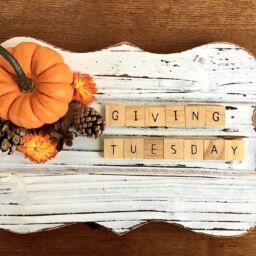
Familial Domestic Abuse
by- Melody Pender
Within a family where everyone should feel loved and protected, Domestic Violence can still occur. “In the United States, an estimated 10 million people experience Domestic Violence every year” (World Population Review, 2022). No one should endure such pain in any relationship, whether through family members or romantic partners. However, in many circumstances, an abused person might think they need to stay in their abusive environment. They could think they are not old enough to leave the household, they may have financial limitations, or they might have other reasons. These thoughts could hinder them from getting the help necessary for freedom.
Leaving Victims unattended to handle abuse themselves will often lead them to a road of destruction rather than healing. Victims and Survivors should know that they are not alone in their suffering. When left alone to deal with their struggles, they may develop unhealthy habits and/or a decline in their mental health. It may be hard for someone who has gone through abuse to seek and reach out for help, but knowing that there are people for them and organizations to help will hopefully give them courage to speak up.
A society should eradicate Domestic Violence in any and every possible situation, and they have many ways to do so. For example, professional help and support for dysfunctional families may create a healthy household or improve a household’s environment (World Health Organization [WHO], 2002). We should also have ways of “monitoring public places such as schools, workplaces, and neighborhoods and taking steps to address problems that might lead to violence” (WHO, 2002).
Domestic Violence is widely addressed by the populace, but one of the difficulties in raising awareness is recognizing the difference between Domestic Violence in romantic relationships and relationships within a family. Domestic Violence is the violence against someone in a group of people closely related to one another by blood, marriage, or adoption (Plumptre, 2022). It is enacted with aggression and leads to physical injury that could be fatal or nonfatal. As the cycle of abuse continues, Domestic Violence always leaves its Victims in danger.
Familial Domestic Violence can be well hidden since it occurs among family members who typically protect one another. The Victims of this kind of Domestic Violence are usually afraid to speak up due to emotional manipulation carried out by the abuser along with physical violence.
Watch out for these warning signs of domestic abuse in a family:
- Lack of conversations between family members, and individuals spending most of their time alone.
- Continuous display of hostility towards a particular member.
- Insult of intellect, physique, or habits as a means of cruel humor.
- Anxiousness/nervousness when being close to certain family members.
- Suicidal thoughts noticeable in a member or other dark thoughts.
- Reluctance of family members to return home and displays of great fear (T, 2020).
A victim of familial Domestic Violence would need external help to end the cycle of abuse as their emotional connection to the abuser may prevent them from signaling for help.
What are some ways we can help individuals experiencing familial Domestic Abuse?
Become a confidant for the Victim. Let them know you are there and provide a safe space to listen to their concerns and fears. If you begin to see physical violence or extremely concerning warning signs of Domestic Abuse, report the case to local law enforcement or a Domestic Violence hotline. Encourage Survivors to attend classes dedicated to overcoming trauma once they have safely escaped their abuse. This will help them grow during their healing process and ensure they are supported through their journey. You can encourage the individual by asserting that they are not the reason for the abuse. They should feel supported, listened to, and comfortable above all else. You can also help the Victim obstruct communication with their abusers such as blocking the abuser’s phone number. If possible, assist in removing the Victim from the abusive household.
According to the World Health Organization’s 2002 World Report on Violence and Health, Domestic Violence can be reduced or eradicated in several ways:
- Having some one-on-one conversations to address the individual’s noticeable toxic behavior.
- Positively enlightening close relations to influence healthy family environments and providing professional help and support for dysfunctional families.
- Mentoring youths in public places such as schools, colleges and the likes and addressing problems that might lead to Domestic Violence.
- Raising awareness to the general public through the media and orientations in large gatherings.
- Taking steps to adjust social factors that can lead to Domestic Violence such as lack of job opportunities, costly resources, the gap between the rich and poor, starvation etc.
Dealing with Domestic Violence requires getting help, whether that abuse is through family, a romantic relationship, a caretaker, etc. Domestic Violence should never happen to anyone, at any point in their lives. It takes time for people outside of an abusive situation to learn and to understand the mentality of Victims and Survivors, and this will help those who are abused seek out the help they may need. Listen to anyone who wants to talk about their abuse, because they are seeking help. If the burden is too much, professional help can guide Survivors through the healing process. No one should endure pain, especially by the people who claim to love them. Hurting does not equal love.
If you or someone you know is struggling through or is a Victim/Survivor of Domestic Violence, there are people out there who can help.
We at ARO are here to support you in your personal healing journey to complete well-being. We bring awareness and education to 13 different types of abuse including Narcissistic, Sexual, Physical, Psychological, Financial, Child, Self, Cyberbullying, Bullying, Spousal, Elderly, Isolation, and Workplace, and help others heal and find peace. Please support our efforts by going to GoARO.org to learn how you can make an impact on the Abuse Care Community.
Resources
World Health Organization. (2002). World report on violence and health: Summary. . http://apps.who.int/iris/bitstream/handle/10665/42512/9241545623_eng.pdf?sequence=1
World Population Review. (2022). Domestic violence by state 2022. https://worldpopulationreview.com/state-rankings/domestic-violence-by-state
Plumptre, E. (2022, July 1). What are the types of domestic violence? https://www.verywellmind.com/different-types-of-domestic-violence-5119884
T, Buddy. (2020, March 1). Top warning signs of domestic abuse. https://www.verywellmind.com/signs-someone-is-being-abused-66535


